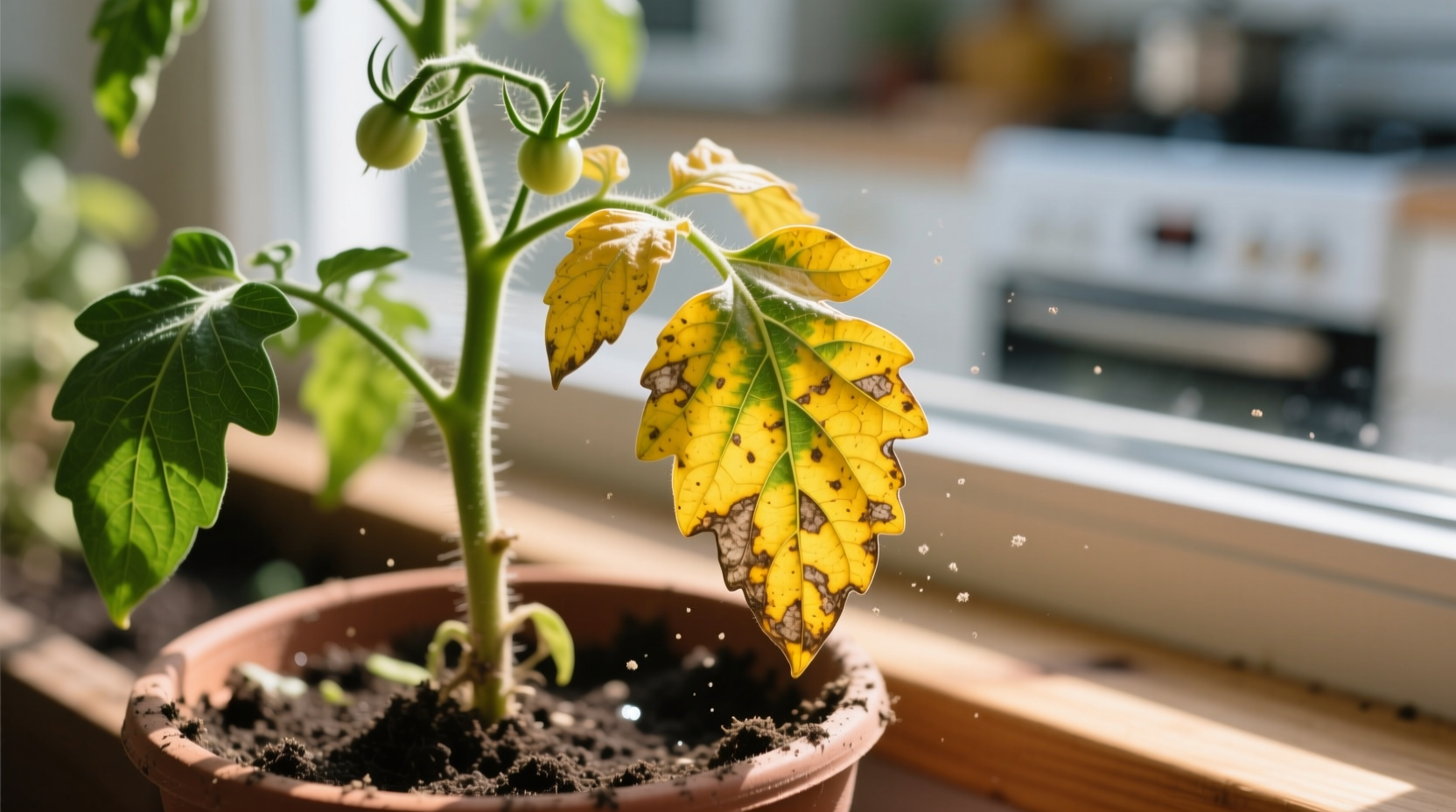If your tomato plant leaves are turning yellow, the most common causes are nutrient deficiencies (especially nitrogen or magnesium), improper watering practices, soil pH imbalances, fungal diseases like fusarium wilt, or environmental stressors. Immediate action can often save your plants and restore healthy growth within 1-2 weeks when properly diagnosed.
Discovering yellow leaves on your tomato plants can trigger gardening panic. You've nurtured these seedlings, anticipating juicy red harvests, only to find foliage fading to an alarming yellow. The good news? Most yellowing issues are treatable when caught early. This guide provides a step-by-step diagnostic approach used by professional horticulturists to identify and resolve the exact cause affecting your specific plants.
First Assessment: What Your Tomato Plant Is Telling You
Before grabbing fertilizers or pesticides, perform this quick visual diagnosis. The pattern of yellowing reveals critical clues about the underlying problem:
- Lower leaves yellowing first - Typically indicates nitrogen deficiency or natural aging
- Yellowing between veins with green veins - Classic sign of magnesium or iron deficiency
- Uniform yellowing across entire plant - Often related to overwatering or root issues
- Yellow patches that become brown spots - Likely early fungal disease
- Sudden yellowing after cool weather - Temperature stress response

Immediate Action Checklist: First 24 Hours
When you notice yellowing, follow this professional horticulturist's protocol:
- Check soil moisture - Insert finger 2 inches deep; should feel moist but not soggy
- Examine recent weather patterns - Sudden temperature changes affect tomato health
- Review your watering schedule - Tomatoes need 1-2 inches of water weekly
- Inspect leaf undersides - Look for pests like spider mites
- Test soil pH - Tomatoes thrive in 6.2-6.8 range
Nutrient Deficiency Identification Guide
Nutrient imbalances cause 45% of yellowing tomato cases according to the University of Minnesota Extension. Use this comparison table to pinpoint specific deficiencies:
| Nutrient | Yellowing Pattern | Additional Symptoms | Solution |
|---|---|---|---|
| Nitrogen | Older leaves yellow first | Stunted growth, pale new leaves | Blood meal or fish emulsion application |
| Magnesium | Yellow between veins, green veins | Purple stems, leaf curling | Epsom salt solution (1 tbsp/gal) |
| Iron | New growth yellow, veins green | White new leaves in severe cases | Chelated iron supplement |
| Sulfur | Uniform light yellowing | Reddish stems, slow growth | Epsom salt or gypsum application |
Watering Problems: The Silent Killer
Improper watering causes 30% of tomato yellowing issues. Tomatoes need consistent moisture but hate waterlogged roots. The Oregon State University Extension reports that 68% of home gardeners overwater their tomatoes, creating perfect conditions for root rot.
Signs of overwatering: Yellow lower leaves, wilting despite wet soil, mushy stems
Signs of underwatering: Crispy yellow leaves, dry soil, blossom drop
Fix watering issues by:
- Watering deeply 2-3 times weekly rather than daily light watering
- Using mulch to maintain consistent soil moisture
- Installing drip irrigation at soil level
- Checking soil moisture before watering
Disease Timeline: From First Yellowing to Plant Death
Fungal diseases progress through predictable stages. Recognizing where your plant falls on this timeline determines treatment options:
- Stage 1 (Days 1-3): Lower leaves show slight yellowing between veins
- Stage 2 (Days 4-7): Yellow areas develop brown spots, spreading upward
- Stage 3 (Days 8-14): Wilting occurs even with adequate water
- Stage 4 (Days 15+): Complete plant collapse, vascular browning visible
According to Cornell University Plant Disease Diagnostic Clinic, early intervention at Stage 1 has an 85% success rate, while treatment at Stage 3 drops to 25% effectiveness.
Environmental Stress Factors
Tomatoes thrive in specific conditions. When environmental factors fall outside optimal ranges, yellowing occurs:
- Temperature extremes: Below 50°F or above 95°F causes stress yellowing
- Sunlight deficiency: Less than 6-8 hours daily leads to pale, weak growth
- Soil compaction: Prevents proper root development and nutrient uptake
- Poor drainage: Creates waterlogged conditions even with proper watering
The Utah State University Extension recommends monitoring daily temperature fluctuations, as sudden drops below 55°F can trigger temporary yellowing that resolves when temperatures stabilize.
Action Plan: Step-by-Step Recovery Process
Follow this professional horticulturist's 7-day recovery protocol for yellowing tomato plants:
- Day 1: Perform complete visual assessment using the pattern identification guide
- Day 2: Test soil pH and moisture levels at multiple locations
- Day 3: Apply targeted treatment based on diagnosis (nutrient spray, fungicide, etc.)
- Day 4: Adjust watering schedule and add mulch
- Day 5: Remove severely affected leaves to prevent spread
- Day 6: Monitor for improvement or worsening symptoms
- Day 7: Evaluate treatment effectiveness and adjust approach if needed
Most tomato plants show visible improvement within 5-7 days when the correct treatment is applied. Complete recovery typically takes 2-3 weeks.
Prevention Strategies for Future Seasons
Professional growers use these proven methods to prevent yellowing issues:
- Conduct soil tests before planting each season
- Rotate crops annually to prevent soil-borne diseases
- Choose disease-resistant varieties (look for VFN on seed packets)
- Apply balanced organic fertilizer at planting time
- Use drip irrigation instead of overhead watering
- Maintain 2-3 inches of organic mulch around plants
The University of Illinois Extension reports that implementing just three of these prevention strategies reduces yellowing incidents by 72% compared to gardens using none.











 浙公网安备
33010002000092号
浙公网安备
33010002000092号 浙B2-20120091-4
浙B2-20120091-4